2017 officially marks the fiftieth anniversary of “The Summer of Love”, when a hundred thousand young people descended on San Francisco’s Haight-Ashbury district with the collective dream of reinventing America. Their movement grew exponentially, changing outlooks and raising the nation’s consciousness. Today there are cynics who dismiss the hippie movement—pigeonholing it as a bunch of longhaired, drug addled, peace sign flashing vagabonds flaunting their naïve idealism and questionable hygiene. In truth, those young radicals peacefully broke down social barriers, ushering in many of the personal freedoms we take for granted today. Vital issues like women’s rights, liberal politics, freedom of expression, environmental awareness, civil and LGBT rights all flowered in that hothouse of social change. We owe them a lot.
That was my attempt at sincere social commentary; now let’s get to those horror movies. But first a little bit of flower child film history.
The emergence of the hippie subculture confused major Hollywood producers who were content to keep making filigree like Hello Dolly (1969), even when it played to empty theaters. But opportunistic sexploitation producers were quick to dive in, recognizing that the fantasy of free love with pretty hippie girls was a perfect lure for middle-aged male audiences. Films like Alice in Acidland (1969) and Wild Hippie Orgy (1967) and Psychedelic Sex Kicks (1967) offered an old guy’s view of a young person’s world. Major independent studios like American International Pictures weren’t far behind, packing in young audiences with films like The Trip (1967) and Psych Out (1968).
But horror filmmakers resisted the hippie movement, perhaps feeling that flower children didn’t offer the kind of visceral drama that fueled their genre. That all changed in 1969, when a career criminal turned guru named Charles Manson exploded onto the scene. Before Manson’s arrival hippies were seen as peaceful, stoned vagrants whose biggest sin was getting more sex than the older generation. After Manson, hippies became potential cult murderers waiting to run amok in bloodthirsty orgies of LSD fueled violence. Southern California was considered ground zero for a full-on Helter Skelter styled uprising. Woody Allen belatedly summed up those fears in 1977’s Annie Hall, “There’s no economic crime here, but there’s ritual religious cult murders. You know, there’s wheat germ killers out there!”
So here we go with ten films that merged peace and love with terror and violence. I’ve confined the list to films produced during the culture movement, as opposed to contemporary films that look back at it with hindsight’s rose-colored granny glasses.
01- WILD IN THE STREETS, 1968 – This is one of the few pre-Manson films on the list. Wild in the Streets is an entertaining and sporadically brilliant satire of youth culture and politics. It’s the cautionary tale of rock superstar Max Frost, who politicians deem an ideal shill to bring them the youth vote. But Max is nobody’s puppet and quickly turns the tables on his middle-aged masters. The dynamite songs Fourteen or Fight and The Shape of Things to Come embody his daring “youth first … and only!” agenda. By the film’s end he’s dosed Congress with LSD, been elected president and shipped everyone over thirty-five to concentration camps. The film boasts a sharp script, great songs by Cynthia Weil and Barry Mann and outstanding performances from Richard Pryor, Hal Holbrook and Shelly Winters. A year earlier, British filmmaker Peter Watkins explored similar terrain in the faux documentary Privilege (1967) chronicling the rise of a pop star manipulated into becoming a political puppet and new messiah. But just remember that Wild in the Streets is only a movie. In real life no inexperienced celebrity with delusions of godhood could use their media stardom as a springboard to the White House … right?
02- LAST HOUSE ON THE LEFT, 1972 – Mari, seventeen, is dying, and the innocence of the flower children dies with her. Last House on the Left was, and remains, a controversial film. Many feel that Wes Craven’s retelling of Ingmar Bergman’s The Virgin Spring (1960) is nothing more than an exercise in sadism and misogyny and I wouldn’t risk arguing with them—seriously, it’s almost impossible to defend this film to normal people. But this tale of two innocent hippie teens falling victim to a group of psychopaths (whose look predates the coming punk era) encapsulates the demise of the love generation. Mari and her friend represent innocence, while Krug and his thugs embody the dark forces that gave us Manson, Altamont and the My Lai Massacre. Or is Last House on the Left just a one note, unrepentantly violent movie? Director Wes Craven was drawn to Bergman’s film by its themes of old-world paganism clashing with Christianity. Being a Craven admirer I’d like to think he subtly included his own updated social commentary amid the relentless carnage. Or am I just as naïve as those flower children?
03- WEREWOLF OF WOODSTOCK, 1975 – After the brutality of Last House let’s switch to something light—bordering on helium. Werewolf of Woodstock was a cheap, shot on video (back when video looked really bad) installment of ABC’s Wide World of Mystery brought to you by Dick Clark. Days after the famous rock festival an enraged Woodstock NY farmer tries to tear down the empty stages. He’s struck by lightning and as a result transforms into a werewolf during thunderstorms. Meanwhile, an unsigned rock band arrives in Woodstock, eager to record themselves performing on the stages to trick record executives into thinking they played at Woodstock. Somehow the werewolf and hippies collide in a horrible film that never even attempts to make sense. How illogical is it? Well, the werewolf is depicted as a savage beast, but he can drive a dune buggy when the script requires it. FYI—dune buggies were huge back in the ’70s! Lot’s of hilarious hippie tropes and a campy looking werewolf (created by the great Joe Blasco) help dull the pain.
04- HORROR HOSPITAL, 1973 – A truly oddball British horror film that jams together hippies, zombies, mad Nazi doctors, a creepy dwarf, gallons of blood and equal amounts of black comedy and there’s a limo with a built-in guillotine! Rock and roll songwriter Jason Jones (Robin Askwith – Confessions of a Window Cleaner, 1974) decides to vacation at a health spa advertised in “Hairy Holidays” magazine. Unfortunately the ad is just bait to lure hippies to the estate of Doctor Storm (Michael Gough- Batman, 1989), a mad scientist who’s surgically transforming them into zombies. What’s the doctor’s motive? Does he have a master plan? Nope, he just hates young people! It’s all about innocent youth versus the evil authority figures out to oppress (and lobotomize) them. Director Antony Balch sneaks in some timely social commentary, particularly when helmeted, fascist looking castle guards endlessly beat Jason, visually mirroring the riots of the day. I guarantee you’re going to have a blast watching this.
05- I DRINK YOUR BLOOD, 1970 – A hippie cult led by guru Horace Bones (Bhaskar Roy Chowdhury) descends on a small town. Bones and his followers gleefully dose an old man with LSD, inciting his vengeful grandson to dose their meat pies with rabid dog blood. Pretty soon drooling psychotic hippies brandishing machetes are terrorizing the locals. I Drink Your Blood is a totally bananas, no-holds-barred horror gem. Amazingly, the film was produced before Charles Manson was arrested. The Manson story broke just as I Drink Your Blood hit theaters, giving it a “ripped from the headlines” appeal that most movies can only dream about. I Drink Your Blood is one of the most satisfying hippie horror hybrids. Double bill this with Horror Hospital for an evening of groovy Grand Guignol!
06- THE DEATHMASTER, 1972 – In 1970, American International Pictures scored a surprise drive-in hit with Bob Kelljan’s Count Yorga Vampire. Robert Quarry made a huge impact on audiences as the title character, inspiring AIP to write him a multi picture contract. But before the ink even dried, Quarry had snuck off to star in and produce The Deathmaster, playing another vampire—this time named Khorda. The bloodsucker washes ashore in his casket and slyly infiltrates a hippie commune. His combination of metaphysical mumbo jumbo and low-end miracles impresses the hippies who worship him as their new guru. It’s a lot of fun if you can get through the extended folk songs by Bobby (Boris) Pickett who also composed that graveyard smash Monster Mash. AIP hated the independently produced Deathmaster, deeming it an imitation and unfair competitor to their films, including the planned Return of Count Yorga. They bought the distribution rights and then did everything short of burning the negative to ensure nobody ever saw it.
07- DRACULA vs. FRANKENSTEIN, 1971 – “What are we protesting tonight?” asks sweet faced, flower child Samantha. “I don’t know, but I bet it’ll be fun!” replies her longhaired, sandal-wearing boyfriend. That’s just one of the priceless bon mots in Al Adamson’s most famous cinematic train wreck. Dracula vs. Frankenstein is a tie-dyed mess combining an aborted hippie movie with an unfinished biker flick all mixed in with an old-school monster movie. J. Carrol Naish (House of Frankenstein 1944), Lon Chaney Jr. (The Wolfman, 1941) and Angela Rossitto (Freaks, 1932) all came out of retirement for this low budget homage to the Universal classics. But the real stars are Anthony Eisley (Hawaiian Eye, 1959-63) as an overage hippie and Regina Carrol (Brain of Blood, 1971) as a Vegas showgirl. Ms. Carrol sports cinema’s most fabulous sixties hairstyle—you’ll instinctually start humming These Boots are Made for Walking every time she enters the frame! She also takes a fantastically cheesy acid trip courtesy of a drink-dosing Russ Tamblyn, unofficially reprising his role from 1969’s Satan’s Sadists. Adamson’s script is delightfully out of synch with the counter culture—it’s as if Donald Trump tried to write a YA novel. Highly recommended for viewers under the influence.
AND NOW we finally come to the 800-pound gorilla in the theater—Mr. Charles Manson. Hollywood cranked out so many Manson or pseudo-Manson exploitation films that including them all would be pointless. If you’re brave or bored you can try to find Manson Massacre (1971), The Love Thrill Murders (1971, Manson Murders (1969) Manson Family Movies (1984) and a bunch more. I’m going to limit the selection to two films representing the best and least known Manson films.
08- HELTER SKELTER, 1976 – This two-part made for television film still stands as the sixteenth highest rated film to air on network television. I can assure you that everyone in America was glued to their televisions for both nights. Helter Skelter took a non-exploitive police procedural approach to the story—it’s like a prototype for Law and Order. But that dry approach vanishes the moment Steve Railsback steps on screen as Manson. Allegedly he spent two hours a day locked in a closet getting psyched up for the camera. Whatever he did it worked because for many of us he remains the definitive Manson.
09- THE OTHER SIDE OF MADNESS, 1971 – This black and white exercise in guerilla filmmaking holds the honor of being the first Manson film out of the gate. It’s a seemingly disjointed but ultimately mesmerizing piece of docu-drama with sparse on camera dialogue and no incidental music. Instead it relies on readings from actual court transcripts and Manson’s recording of his song “Mechanical Man” combined with vérité style footage of the Manson family at play. The later scenes depicting the Sharon Tate murders aren’t gory—instead they’re disturbingly matter of fact and undeniably powerful. The slow death of writer Wojciech Frykowski is particularly effective. I’m not sure if I’d classify The Other Side of Madness as entertainment, but it’s a unique, almost art house rendition of a familiar tale.
AND FINALLY…
10- JOE, 1970 – We’ve seen plenty of murderous long hairs, so now let’s give equal time to the flower child’s natural enemy—the hardhat. Many would argue that Joe isn’t a horror film, but I’d argue for it deserving a spot near Helter Skelter. Peter Boyle’s title character is a bigoted, psychotic ball of rage just waiting to explode. He skillfully manipulates desperate, grieving father Bill Compton (Dennis Patrick, Dallas 1979-84) into becoming his accomplice and together they massacre a commune of unarmed hippies. Joe’s war cry of, “There’s only one way out now … clean! That means everybody!” echoed reports of mass killings by American soldiers in Vietnam. Joe was a career maker for actor Peter Boyle and director John G. Avildsen (Rocky, 1977). The film made a huge impact on release, grossing over $19,000,000 on a budget of only $106,000. Audiences were polarized, with liberal-minded viewers stunned by the racism and violence while some right-wingers cheered on Joe’s bigoted rampage. Someone even released an LP of Joe’s more venomous diatribes on vinyl—and I don’t think conservatives were listening ironically.
That’s the list, done in no particular order because we don’t answer to the establishment and it’s crypto fascist numerical sequencing. By the way, some runners up for this list were Phantom of the Paradise, Werewolves on Wheels, Snuff and Dracula AD 1972. Make your voice heard and tell us what we missed. Peace, and watch out for those wheat germ killers!
 Horror News | HNN Official Site | Horror Movies,Trailers, Reviews
Horror News | HNN Official Site | Horror Movies,Trailers, Reviews
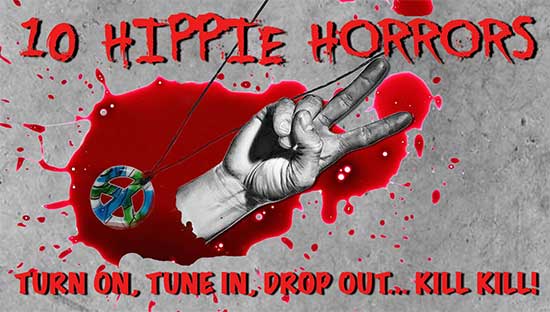
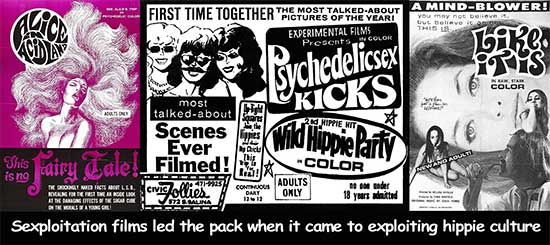
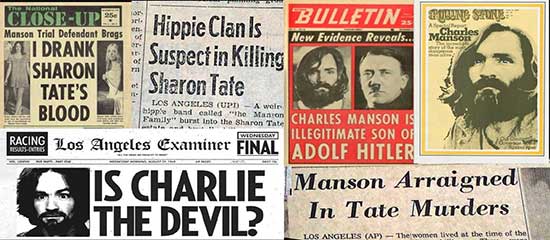
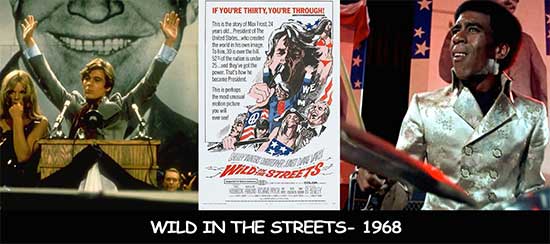
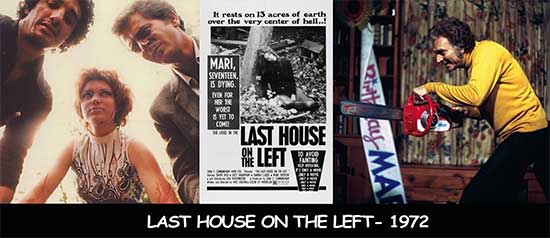
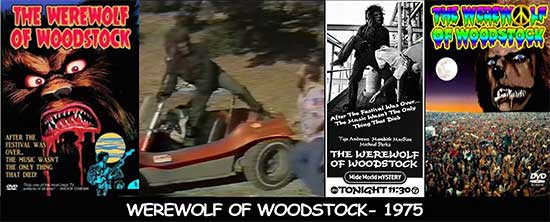
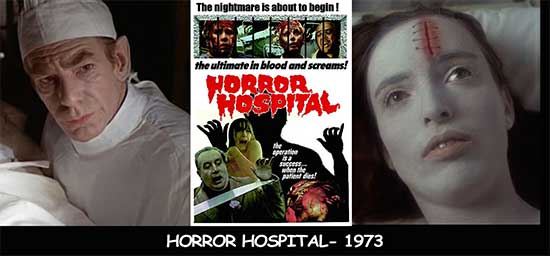


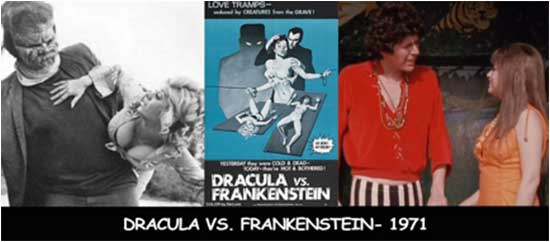
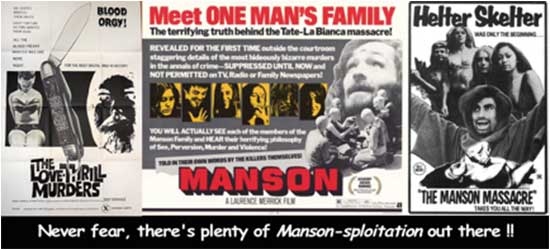
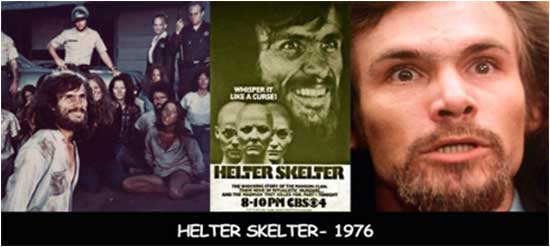
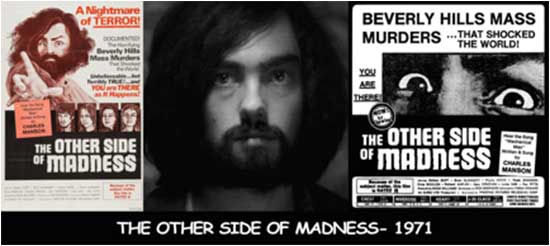

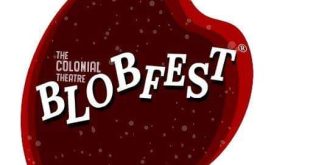


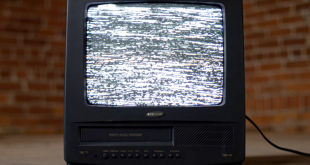
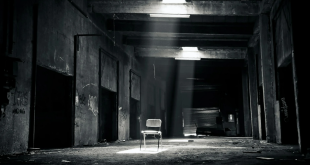

The only good hippie is a dead hippie. Even then their drug saturated bodies makes poor fertilizer.
“The Tripper” 2007
Terror on the Beach, ’71 or ’72, with Dennis Weaver, Estelle Parsons, and Susan Dey.